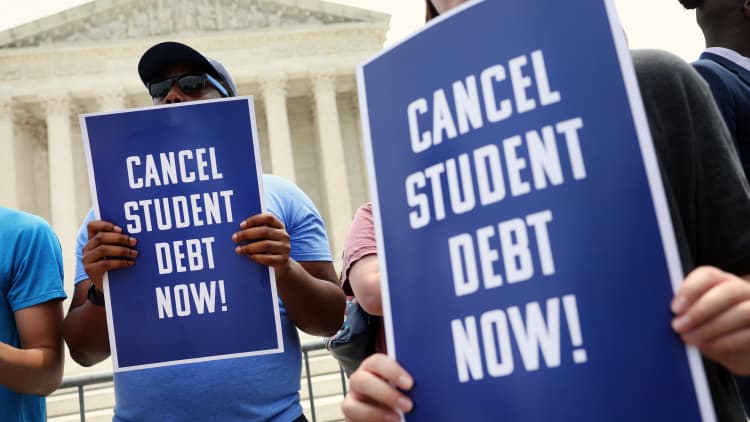
Once families hit their federal student loan limits, they often turn to federal Parent PLUS loans to secure the financing they need to send their children off to college.
As college costs rose, so have student loan balances, plus the share of debt owed not just by graduates, but their parents, as well.
Parent PLUS loans account for $111 billion
The share of parents taking out Parent PLUS loans to help cover the costs of their children’s college education has increased steadily over time, research shows, almost quadrupling over the past two decades, according to Kantrowitz.
Currently, 3.7 million parents have $111.3 billion in Parent PLUS loans outstanding. The average parent PLUS loan is roughly $30,000.
Parent PLUS loans also come with an interest rate of more than 8%, compared with 5.5% for undergraduate student loans.
There could be help for parents after all
The only option for parent borrowers outside of the standard, graduated and extended repayment plans is a “special limited window of opportunity” to consolidate Parent PLUS loans into direct consolidation loans, making them eligible for income-driven repayment plans, Chany said. However, this process “is complicated.”
The Institute of Student Loan Advisors provides step-by-step guidance on this loophole — referred to as the “super-secret double consolidation method” — which enables parents to gain access to lower-cost income-driven plans.
“The gist is that if you consolidate a consolidation loan, and are careful about how you go about doing it, that new loan will be eligible,” Kantrowitz explained. This also entails switching to a different loan servicer and submitting a paper form, among other steps, so the new loan is no longer tied to the original Parent PLUS.
Still, the extra legwork is worthwhile. By switching from income-contingent repayment to SAVE, for example, payments on undergraduate loans could be reduced from 20% of discretionary income to 5%. “It cuts the payment potentially by a factor of four,” Kantrowitz said. “It is a dramatic difference in the monthly loan payments.”
The savings over 20 years could amount to “thousands or even tens of thousands of dollars,” he estimated.
But “there is limited time left to take advantage of it,” Kantrowitz also added. The U.S. Department of Education said it will close this loophole after July 1, 2025.
Don’t miss these stories from CNBC PRO:










